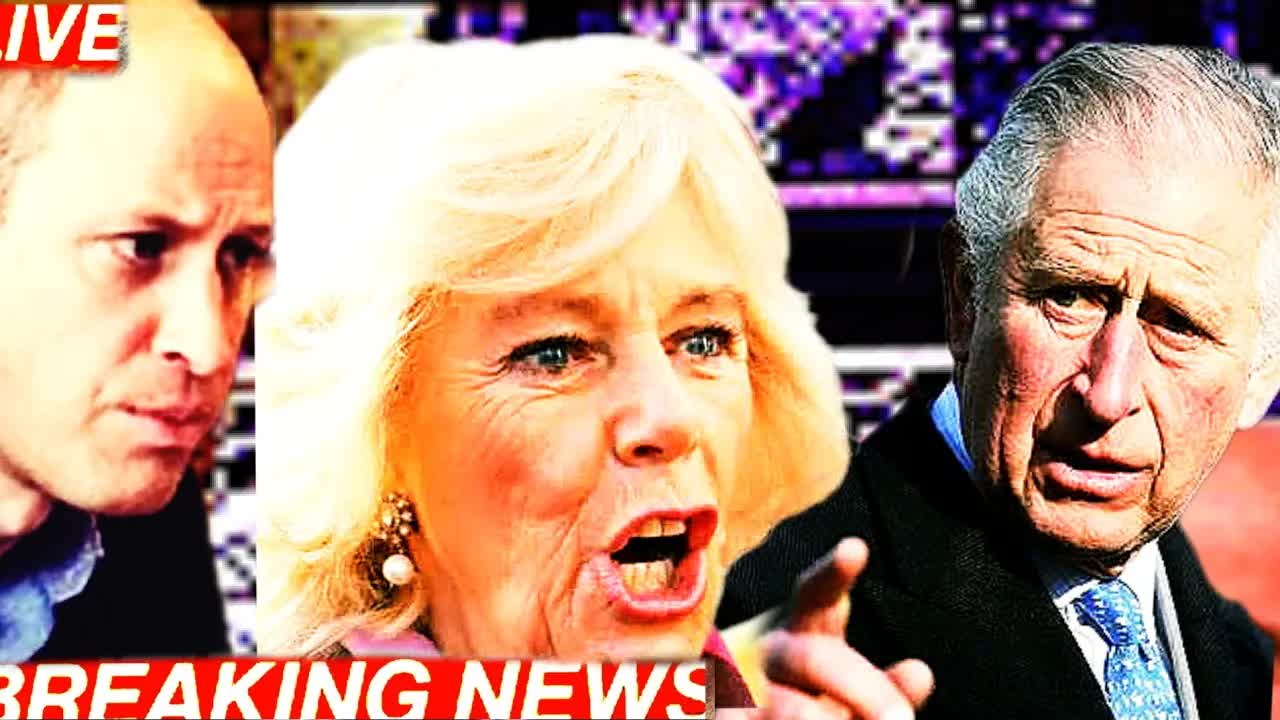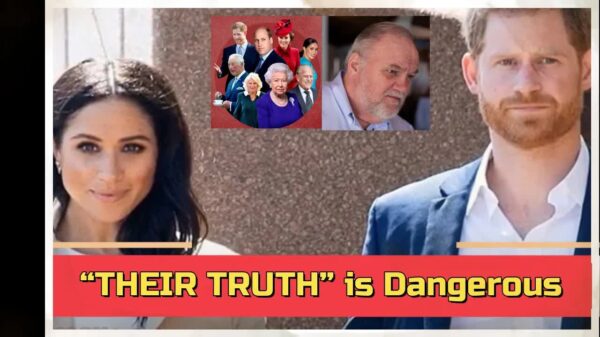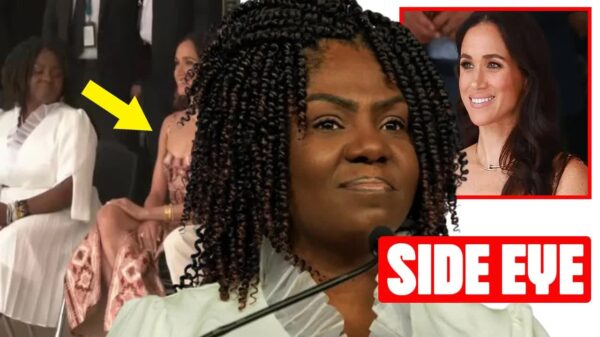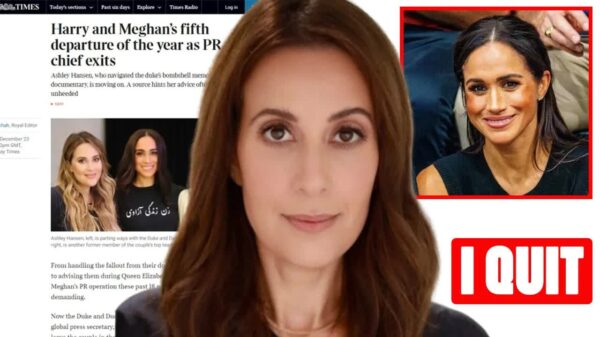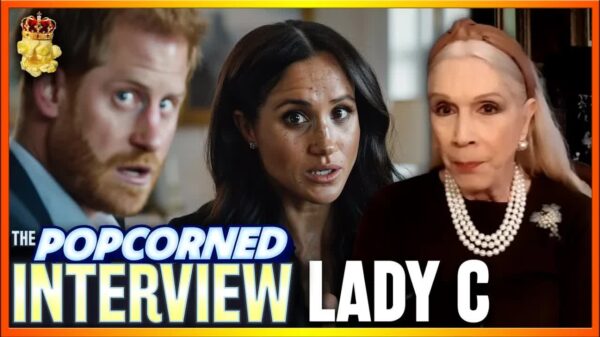In recent weeks, the British Royal Family has become a hotbed of speculation and intrigue, particularly concerning the relationship dynamics between King Charles III, Queen Camilla, and their sons, Prince Harry and Prince William.
Reports indicate a budding closeness between Charles and William, while tensions with Harry seem to be easing.
However, the focus today is on the marriage of Charles and Camilla, which appears to be under scrutiny amid swirling rumors of discord and potential separation.
The whispers of marital troubles have sent shockwaves through London and beyond, with royal watchers analyzing every public appearance for signs of strain.
Observers have noted a distinct lack of intimacy during recent engagements, leading many to question the stability of Buckingham Palace and the monarchy’s future.
What does this mean for the royal family’s image, and how might it affect their standing with the public?
Compounding these issues are King Charles III’s ongoing health challenges, including his battle with cancer.
Despite Queen Camilla’s persistent encouragement for him to slow down and prioritize his health, the king remains steadfast in his commitment to royal duties.
This determination highlights the delicate balancing act that monarchs must perform between public responsibilities and personal well-being—a balance that seems to elude Camilla, who clearly worries about her husband’s health.
Tensions within the royal family extend beyond Charles and Camilla’s marriage.
The relationship between Camilla and Prince Harry remains strained, reflecting deeper complexities within the family.
Their differing views on duty and personal priorities have exacerbated existing rifts.
Additionally, there are emerging disagreements regarding Kate Middleton‘s role within the royal family, further illustrating the friction between Charles and Camilla over family responsibilities and public expectations.
The emotional landscape within the palace is palpable.
Queen Camilla’s visible discomfort during tributes to Princess Diana, which Charles actively supports, underscores the personal differences that exist.
These contrasting reactions not only reveal individual feelings but also highlight broader implications for how the monarchy is perceived by the public.
The polished image of unity projected during official appearances starkly contrasts with the underlying turmoil threatening to disrupt the royal family’s foundation.
As the narrative unfolds, speculation about a possible formal separation between King Charles and Queen Camilla grows.
While some skeptics dismiss the idea, citing the couple’s past resilience, others argue that the signs of discord may suggest deeper, irreconcilable differences.
The royal couple’s future remains uncertain, raising questions about the implications for Buckingham Palace and the monarchy as a whole.
Amidst this chaos, Prince William faces his own set of challenges, including the recent loss of a cherished family member.
His ability to remain resilient in the face of adversity serves as a poignant reminder of the pressures that accompany royal life.
As the heir to the throne, William’s experiences reflect the ongoing struggles faced by those destined to lead the monarchy into a new era.
The saga surrounding King Charles III and Queen Camilla is not just about their personal challenges; it also touches on broader themes of duty, legacy, and public scrutiny inherent to royal existence.
This unfolding drama reveals the fragile equilibrium between personal fulfillment and the obligations of monarchy, offering a glimpse into the complexities of modern royal relationships.
As the story continues to develop, it prompts reflection on the legacy Charles and Camilla will leave behind and the adaptations necessary for the monarchy to thrive in an ever-evolving world.
Their journey embodies both personal trials and institutional resilience, showcasing the changing role of the British royal family in contemporary society.
Historically, the British monarchy has navigated through significant transformations while maintaining traditions that anchor national identity.
Each monarch and consort has faced unique challenges that have reshaped the monarchy’s role.
In this context, King Charles III and Queen Camilla represent a blend of continuity and adaptation, striving to balance tradition with a progressive vision that resonates with modern audiences.
At the heart of their story lies the inherent sacrifices of royal leadership.
Their unwavering dedication to public service, even amid personal strife, echoes the sacrifices made by generations of royals before them.
It serves as a reminder that leadership—whether in a monarchy or any institution—often demands personal sacrifice and steadfast commitment to duty.
Public perception plays a crucial role in shaping the monarchy’s future trajectory.
As observers analyze the dynamics between Charles and Camilla, their conclusions will inevitably influence broader sentiments towards the institution.
The monarchy’s ability to adapt to societal changes while preserving its core values will be vital for maintaining relevance and support in the years ahead.
In the midst of uncertainty surrounding King Charles and Queen Camilla, Prince William emerges as a pivotal figure whose leadership and resilience could shape the future of the monarchy.
His capacity to navigate personal challenges while preparing for kingship reflects a generational shift toward a more transparent and inclusive royal family.
William’s journey serves as a beacon of hope for continuity and stability within the royal household.
As we continue to witness the unfolding drama of King Charles III and Queen Camilla, it offers profound insights into the complexities of royal life and the enduring fascination with monarchy in the public imagination.
Their story, marked by both ceremonial grandeur and personal discord, illustrates the human dimensions behind the royal façade, reminding us that even those in the highest positions face trials and tribulations.


